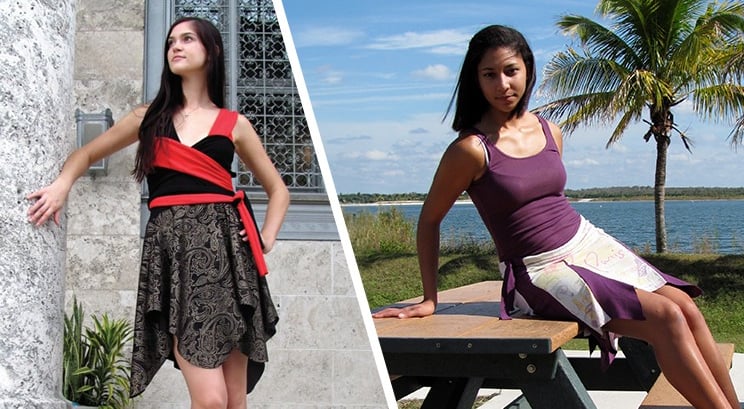Sustainability, Art, and the Future: Creating with Purpose
Discover how sustainability and creativity go hand in hand. From handmade greeting cards to a fashion look made of grocery bags, artist Lindsay Agnew shares her journey of turning discarded materials into meaningful art. Explore why sustainable art matters and how you can support a more eco-conscious future—one creative choice at a time.
2 min read


Since I was young, I’ve been creating art sustainably—before I even realized there was a word for it. What started as a fun way to reuse magazines to make homemade greeting cards and envelopes slowly evolved into a lifestyle, a creative mission, and eventually, a movement I’m proud to be a part of.
We live in a world of constant consumption. Products are made, shipped, and thrown away in record time. Packaging is torn off and tossed. Items are replaced not because they no longer function, but simply because they’re no longer “new.” But what if we looked at those forgotten, discarded materials differently?
As an artist—and alongside many other creatives I know—I’ve learned to see potential in the overlooked. Trash becomes treasure. Waste becomes material. Innovation begins where limitations exist.
A Life of Creative Repurposing
Over the years, I’ve channeled this passion into larger projects. One of my proudest moments was creating a sustainable clothing line made entirely out of used t-shirts. Each item was deconstructed and rebuilt into something fresh and wearable, proving that fashion doesn’t have to be wasteful to be bold and expressive.
Most recently, I participated in Orlando’s Trash to Trends Fashion Show, a community event where artists and designers create high-fashion looks entirely out of recycled materials. I even modeled my own piece—crafted entirely out of grocery bags. It was equal parts challenge and celebration. A reminder that beauty and statement can emerge from even the most unexpected materials. (I’ll be sharing the full concept soon!)
Why Artists Are Leading the Way
Creativity fosters innovation—and artists are uniquely positioned to help shape a more sustainable future. We ask questions. We push boundaries. And we aren’t afraid to create outside the norm. When industries begin to rethink production and waste, artists are often at the frontlines, turning leftovers into statements and refuse into function.
Sustainable art isn’t just a personal mission—it’s a reflection of values. It’s a way to slow down, reimagine, and rethink what we consume and what we leave behind
How You Can Support Sustainable Art
Here are a few ways to get involved or start supporting a more eco-conscious creative future:
Buy from artists who use repurposed or recycled materials
Support work that blends innovation with environmental consciousness.Choose handmade over mass-produced
Handmade items often use less packaging, less plastic, and support local creativity.Reuse materials in your own creative projects
Old magazines, packaging, fabric scraps, buttons, and even plastic can be repurposed into art.Host a “create with scraps” day
Gather unused supplies and challenge yourself or your kids to make something new from old materials.Follow and share sustainable artists
Visibility matters. Help spread the word about creators who are doing meaningful, eco-conscious work.Think before you toss
Could that old item become something else? A gift tag? A journal cover? A sculpture base?
Final Thoughts
Sustainability in art isn’t just a trend—it’s the future. Every small choice we make as creatives and consumers adds up. Whether you’re buying less, creating with purpose, or simply admiring a dress made of grocery bags on a runway, you’re participating in a movement that values innovation over excess.
The next time you reach for something “disposable,” ask yourself: what else could it become?
Follow the Creativity
Orlando, Florida
© 2025. All rights reserved.


